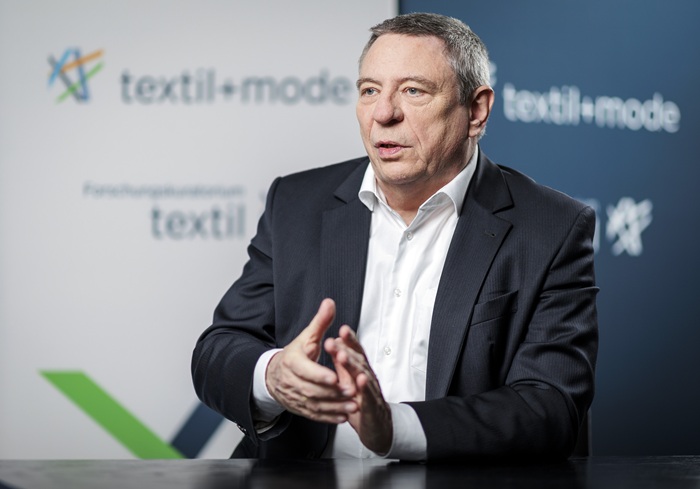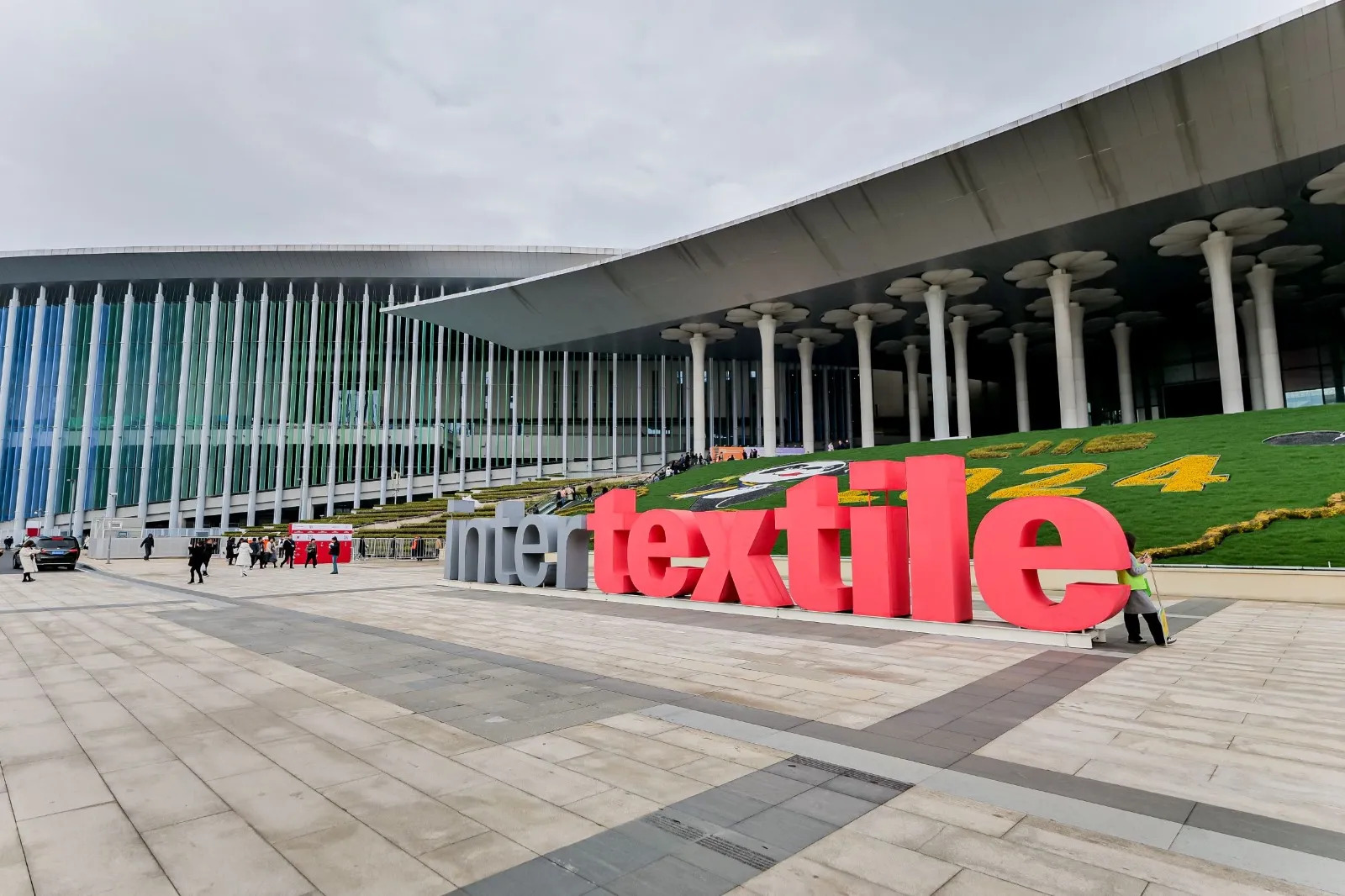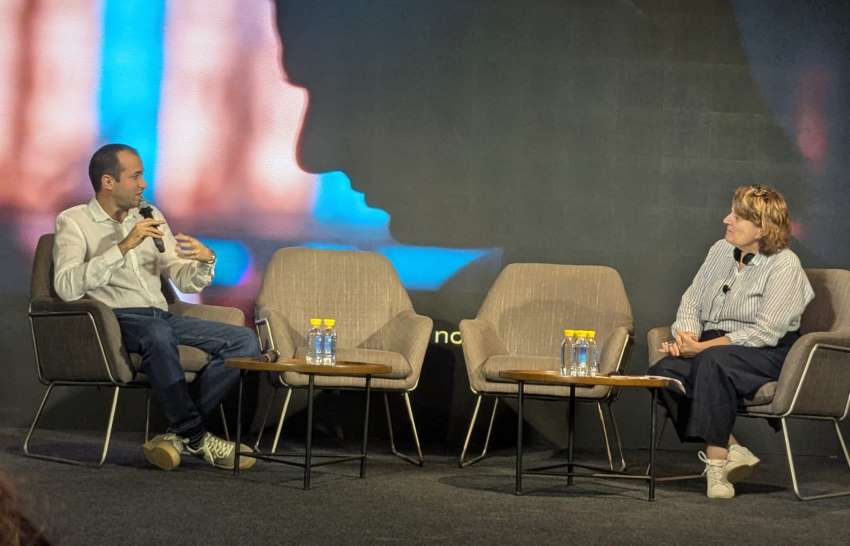FW
Outlook Plus Latin America will be held in Brazil from March 7 to 9, 2017. The focus will be on hygiene, personal care and medical nonwovens for the Latin American market. Speakers will analyse trends in components and raw materials for those products.
Latin America is seen as a key region for future growth and investment of the broad nonwovens industry. With the national economies of countries like Chile and Mexico predicted to gain momentum in 2016, the region’s diversity offers both local and international businesses opportunities for development.
Additional highlights on medical nonwovens and their role in a healthy society will be addressed. A tabletop exhibition will also be offered for local and international companies to showcase their products and services. Opportunities for participants to meet and network will be offered during the conference.
The inaugural event was held in São Paulo in March 2015, and attracted more than 250 attendees with participants declaring the first-ever Latin American event a success for their businesses. The event is organized by Edana and Inda. Edana serves more than 240 companies across 36 countries in the nonwovens and related industries. Edana is to create the foundation for sustainable growth of the nonwovens and related industries. Inda serves hundreds of member companies in the nonwovens/engineered fabrics industry in global commerce. Inda events help members connect, learn, innovate, and develop their businesses.
www.edana.org/education-events/...and.../outlook-latin-america-2015
Cotton USA kicked off Cotton Days in four key consumer markets of Asia—Japan, Korea, Taiwan and Thailand. Cotton Day in Japan began with a fashion event with innovative Japanese designer Kunihiko Morinaga and Momentum Factory Orii, a company that uses traditional techniques in an innovative way to process copper. Actors Norika Fujiwara, Junpei Mizobara and Fuka Koshiba received Cotton USA awards. Cotton USA also announced the winners of the annual Cotton Day T-shirt design contest.
Cotton Day celebrations in Korea were marked by a fashion event directed by the young and trendy Korean fashion designer Munsoo Kwon. He translated seersucker and other cotton fabrics into hip and modern men’s and women’s wear during a dynamic fashion show.
To celebrate Cotton Day in Taiwan, Cotton USA sponsored Kevin Kern’s 2016 world tour. Kern is an American pianist, composer and recording artist of new-age music who was born legally blind.
This year’s Cotton Days concluded in Thailand with the launch of Cotton USA collections from two Cotton USA licensees, Blue Corner and Khaki Bros, during a high profile fashion show. Famous Thai models and actors modeled the Cotton USA clothes. These distinctive women’s and men’s apparel collections reaffirm that cotton is an ideal fiber for fashion apparel.
"This is happening within the industry itself as brands try to engage the new consumer - and lure back the old. Fashion industry is certainly seems to be in a state of flux. The collapse of the Asian market, an exodus of designer talent from the big houses and the sluggish performance of ready-to-wear has precipitated several radical announcements."

This is happening within the industry itself as brands try to engage the new consumer - and lure back the old. Fashion industry is certainly seems to be in a state of flux. The collapse of the Asian market, an exodus of designer talent from the big houses and the sluggish performance of ready-to-wear has precipitated several radical announcements.
The slowdown has been profound. According to Philip Gajzer, managing director of Move Now Commercial Brokers, which advises luxury brands on property, footfall has dropped by around 20 per cent in recent months, and as much as 50 per cent in certain areas. An increase in first-quarter sales at luxury conglomerate Kering came in below expectations at 2.6 per cent, while earlier this month retailer Hugo Boss said it would cut costs by €50m this year after a 4 per cent fall in sales over the same period.
Beginning of the slowdown

According to some fashion houses, this slump began with the global economic downturn in 2008 and sharpened in the wake of the Paris and Brussels attacks. A new system of Chinese import taxes introduced in April has contributed further to luxury’s woes. The Chinese, who account for one-third of all luxury purchases globally, are being more frugal.
Disruption is happening within the industry itself as brands try to engage the new consumer - and lure back the old. In February, British fashion house Burberry announced it would start selling collections directly from the catwalk from September - a ‘see now, buy now’ strategy. Commentators heralded the decision for subverting forever the traditional show format, where clothes are normally delivered in store six months after their catwalk appearance, and upsetting the sanctity of a twice-yearly show schedule that has existed for 50 years.
Burberry chief executive and creative director Christopher Bailey explained that it’s doing what feels right for our audience. It wasn’t supposed to be a ground shift within the industry. Or even that radical. But we’re in an industry which is supposed to embrace change and so this format felt like part of that journey, he said.
Tom Ford will shift his show to a see now, buy now model in September, while Prada, Michael Kors, Coach and Diane von Furstenberg all offered a small number of accessories and apparel for sale immediately after their autumn/winter presentations this spring.
Some are less enthusiastic. It’s a mess, said Karl Lagerfeld, also in February, of the decision by some brands to re-tailor the business of fashion. The creative head of Chanel, Fendi and his own brand acknowledged the capabilities some companies might have to deliver high volumes in shorter timeframes through direct distribution. But Lagerfeld said the system would be disastrous for smaller designers still dependent on wholesale to achieve sales. He echoed the sentiments of many when he said, ‘This way is chaos.’
In fact, ready-to-buy may be less disruptive than it seems. Our model of business is already ready-to-buy in that most of our sales are in the pre-collections, said Michael Burke, chief executive of Louis Vuitton. Only 5-10 per cent of store merchandise is presented on the runway. For us, the show is not about commercial product. It’s about being transgressive and remaining interesting, so that we have something to talk about.
Disruptive moves
Meanwhile, more disruptive are the plans to merge the men’s and women’s shows. Again, Burberry was among the first to announce such an approach. But the mixed catwalk was already well established, with Gucci, Prada and Saint Laurent among those experimenting. Gucci has made the shift permanent.
This gender blending is profound. First, it makes for an editorial nightmare, as fashion editors work out what should be covered, in which month, and where. For business, it makes some sense by showing women’s clothes on menswear catwalks, brands can use the earlier calendar dates to increase their in-store shelf life.
Incidentally, the women’s season is a source of frustration for designers who want to keep their product in store for longer before sales begin. Sales are the terror of our industry where a piece of fashion has a lifetime of four months, says Albert Kriemler of fashion house Akris, which has no plans to change its practice. The menswear dates would be much more reasonable to the industry in terms of delivery.
Meanwhile, discounting remains the scourge of the industry. Gucci has a plan - last December the Kering-owned company renounced the sale season, saying its products will simply hang alongside new season stock with no reduction. Likewise at Saint Laurent, which claimed the creation of the ‘permanent collection’ that is never discounted has contributed to the company breaking the $1bn revenue barrier last year.
The Trans-Pacific Partnership trade agreement is expected to have a positive impact on both retailers and American consumers. Tariffs on goods from TPP countries totaled nearly $6 billion in 2015, and most of it would eventually be eliminated after the measure is enacted, which would benefit consumers through lower prices.
TPP will lower costs across global supply chains in the TPP region, and those lower costs will be reflected in US price tags. Families will benefit from greater spending power both from lower prices and higher wages.
International trade is a major supporter of US employment, accounting for 6.9 million US jobs in the retail industry. TPP will have a significant positive impact on American families, workers and retailers who seek to provide them with a wide range of goods at affordable prices.
TPP is seen as making it easier for retailers to ensure that factories in TPP countries adhere to labor and environment conditions in their codes of conduct. Retail is the nation’s largest private sector employer, supporting one in four US jobs – 42 million working Americans. Contributing $2.6 trillion to annual GDP, retail is a daily barometer for the nation’s economy.
Inditex and IndustriALL have signed a cooperation agreement aimed at boosting the quality of suppliers’ textiles in the world. IndustriALL is the global federation of trade unions that represents over 50 million workers in 140 countries. It undertakes various initiatives to combat precarious work and defend workers’ rights.
Inditex is one of the world’s largest fashion retailers with eight brands and more than 7,000 stores throughout the world. It came into the textile industry in 1963. The brands are Zara, Pull & Bear, Massimo Dutti, Bershka, Stradivarius, Oysho, Zara Home and Uterqüe. Every part of its fashion business is vertically integrated.
Inditex has identified the processes of its suppliers and monitors them through more than 10,000 social and environmental annual audits. Recently IndustriALL affiliates in India discussed strategies and shared experiences of organizing precarious workers in the textile, garment and leather sector in a union building workshop on May 4 and 5, 2016, in Bangalore.
This agreement can monitor and supervise providers worldwide. Thus wages and working conditions will be improved. Thus the rights of factory workers can be protected and suppliers can negotiate wages and working conditions. So strengthening workers and trade unions can lead to real change in the global textile industry.
Yarnex will be held in New Delhi, July 21 to 23, 2016.This is India’s leading event for fibers and yarns. It brings together manufacturers and suppliers of fibers, yarns and related services.
The exhibition serves the sourcing requirements of the textile value chain in the north, east and central markets of the country.
Yarnex was launched in Tirupur in 2009. This edition will welcome decision makers from India and overseas, who represent international buying houses, composite mills, power loom weavers, knitters, distributors and wholesalers, apparel brands, importers, fashion designers and fashion labels.
Major exhibit categories include natural, man-made, specialty and other fibers as well as a variety of yarns, featuring natural and blends, man-made and blends, elastic, fancy and specialty.
The event has now firmly entrenched itself as a prominent brand and an important cog in the sourcing and business networking cycle for the textile value chain. It has attracted leading Indian and international manufacturing companies, who have successfully reached out to their target customers, setting up enduring business linkages.
Yarnex comes to Delhi after the success it has garnered over seven editions in Tirupur. It has established itself as an important international sourcing platform in India.
US cotton demand, including mill use and exports, is expected to increase 12 per cent in 2016-17, as exports are projected to rebound. In 2015-16, the limited supplies—particularly of higher quality cotton—and sharply lower imports by China reduced demand to a 30-year low.
For 2016-17, exports will continue to account for 74 per cent of the total demand. The increase in exports is likely to push US share of global trade in 2016-17 to 32 per cent, up from last season’s 26 per cent, but similar to the share recorded in 2014-15.
However, US cotton mill use for 2016-17 is estimated to remain flat, supported by the continued demand for US cotton textile product exports. With US cotton production expected to exceed demand in 2016-17, ending stocks are projected to increase from the current season. Cotton stocks are forecast at 4.7 million bales on July 31, 2017.
US cotton production is forecast at 14.8 million bales, 15 per cent above the final 2015 estimate. The 2016 cotton area is expected at 9.56 million acres, one million acres above 2015. The higher planted acreage is largely due to a return of the area that was prevented from being planted last season due to wet conditions. In addition, relative prices favor cotton slightly over competing crops.
US cotton harvested area for 2016 is projected at 8.8 million acres, nine per cent above the 2015 estimate of 8.1 million acres.
Resil Chemicals has won a prestigious National Award from the Technology Development Board, Department of Science and Technology, Government of India, for the successful commercialization of an indigenous technology, N9 Pure Silver.
This award recognizes excellence in collaboration, indigenous technology development and commercialization. N9 Pure Silver was featured on BBC Horizons, the flagship science and technology program airing on BBC World News. It was also featured on allied channels across the world.
N9 Pure Silver is an antibacterial and hygiene finish applied on fabrics or garments. It is a revolutionary particulate silver-based technology that, on contact, neutralizes odor-causing bacteria, keeping textiles fresher for longer. This breakthrough technology delivers outstanding odor control performance, combined with impeccable environmental credentials.
Resil Chemicals, based in Bangalore, is a leading exporter, manufacturer and supplier of silicone oils , silicone defoamers, silicone surfactants.
With a focus on sustainability based on advanced technologies for a variety of industrial applications, Resil’s vision is to bring world class technologies to global markets. This is facilitated by the development of patented materials, key collaborations with advanced research facilities and multi-million dollar investments.
It has resulted in a comprehensive product range for textiles, which includes finishing agents, silicone fluids, lubricants, enzymes and organic softeners.
Muhammad Usman, Central Chairman of Pakistan Yarn Merchants Association (PYMA) has urged the Federal Finance Minister to save the downstream textile industry. In a letter to Finance Minister Ishaq Dar, Chairman PYMA pointed out that the local manufacturers of polyester filament yarn can only meet the needs of local downstream industry to the extent of about 25 per cent.
Despite the fact that investigation was currently underway by National Tariff Commission to review anti-dumping duty, the local manufacturers are lobbying very hard to get Regulatory Duty (RD) imposed. Usman said that these attempts by the local manufacturers would put the entire weaving and knitting industry in grave situation, by increasing the cost of their basic raw material (yarn), thus making the entire downstream industry uncompetitive.
They want to create monopoly like situation to give them some short term benefits at the expense of very large downstream sector, which employs millions of people and is the back bone of our economy, Usman added. It is pertinent to note that in 2008 NTC had imposed anti-dumping duties (Max 18 per cent) on the filament yarns originating from Thailand, Malaysia, Korea and Indonesia. At that time there were about 17 local manufacturers of polyester filament yarn and there was no import of polyester yarn from China. Despite of the fact that the anti-dumping duty was levied for over eight years, the number of local manufacturers shrank into four units and their market share decreased.
The long term solution for local manufacturers is to modernise and upgrade their plants and thus enhance capacity to achieve economies of scale. RD is not the right solution, he added.
Pakistan’s textile mills want duty and sales tax exemption on imports of raw and ginned cotton, considering the shortfall in the local cotton output.
The last budget had imposed sales tax at five per cent on the import of raw and ginned cotton. On the other hand, local cotton remained exempt from sales tax.
Pakistan has to import around 25 per cent of its cotton requirement. This is mainly of long staple and contamination-free cotton, which is not available in the country. This cotton is used to manufacture high value yarn and in turn high value added products, which are mainly exported in one form or another.
Due to the crop failure this year, the industry had to import more cotton as compared to the previous year; therefore, it says import of raw cotton should be exempt from duty and tax. Due to the three per cent duty, the cost of production has further increased as the prices of local cotton also increased in tandem with imported cotton prices.
There is also a demand that the duty on import of manmade fibers such as polyester, viscose, acrylic and nylon should be reduced to zero.
The industry consumes around 16 million bales annually, whereas the total production of cotton in Pakistan is around 13 million bales.












